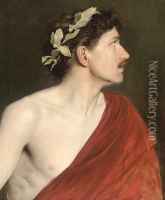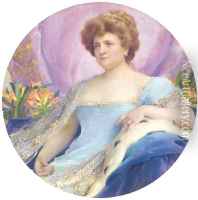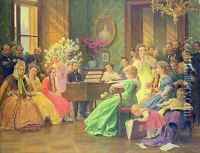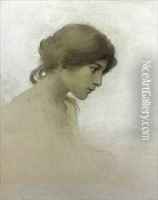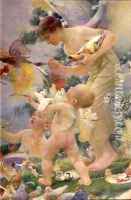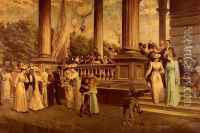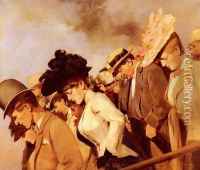Franz Dvorak Paintings
Franz Dvorak, also known as Franz Dvorák, was a Czech-Austrian painter associated with the Vienna Secession movement. He was born on September 14, 1862, in Zwittau, Moravia, which was then part of the Austro-Hungarian Empire and is now in the Czech Republic. Dvorak demonstrated an early talent for art and initially trained at the Academy of Fine Arts in Prague before moving to Vienna, where he continued his studies under the guidance of Christian Griepenkerl, a professor at the Academy of Fine Arts Vienna.
During his time in Vienna, Dvorak became involved with the Secession movement, which was a group of artists that broke away from the traditional academic art of the time. The movement was known for its embrace of Art Nouveau and Symbolist styles, and it sought to create a new style that was free of historical constraints. Dvorak's work often featured lush, decorative elements and a vibrant use of color, which became characteristic of the Vienna Secession style.
Franz Dvorak's artistic output included portraits, genre scenes, and allegorical works. He had a penchant for depicting women and children, and his portraits often conveyed a sense of elegance and serenity. His work was well-received, and he enjoyed success as an artist during his lifetime. Dvorak exhibited his works in various important exhibitions, including those of the Vienna Secession, and received a number of awards for his paintings.
Despite his association with the Vienna Secession, Dvorak's style was also influenced by the broader European Symbolist movement, and he incorporated elements of mysticism and dreamlike imagery into his work. His paintings often feature ethereal scenes and figures, imbuing them with a sense of otherworldly beauty.
Franz Dvorak's career was marked by his dedication to the arts and his contribution to the development of modern art in Central Europe. He died on June 7, 1927, in Vienna, Austria. Today, his works are held in several museum collections and continue to be appreciated for their artistic merit and historical significance in the transition from traditional to modern art.






